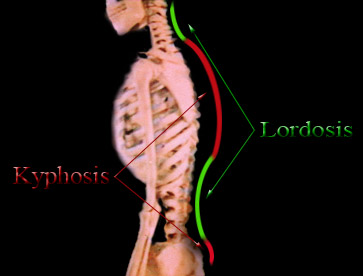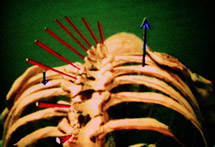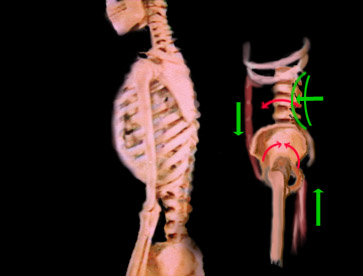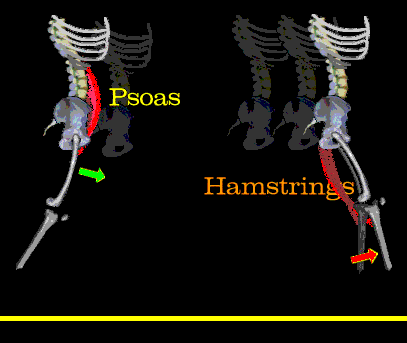Purpose of yoga
In due course of time, yoga is mainly looked upon as a set of techniques useful for achieving fitness in daily life and prevention and cure of sime specific diseases or disorders. But the goal of yoga was different when yoga practices came into existence more than three thousand years ago. Throughout its history, yoga seems to have undergone changes regarding the purpose for which it was practiced. Many different varieties of yoga came to be practived for different purposes. The main verieties fof yoga include
Bhaktiyoga(Yoga of devotion): is the oldest variety of yoga in which the person practicing it invokes the Creator of the universe to shower grace and compassion. This grace and compassion is meant to help the devotee overcome all the travails and hardships of living . Practice of Bhaktiyoga includes prayer, worships of living. Practice of Bhajtiyoga includes prayer, worship, observing austerities and abstinence, and practice of virtue. In the middle ages in India, Many saints cultivated the way of devotion as mass-movement.
Karamayoga(Yoga of duty or action): is described in great detail in the Bhagavad Gita. The main principles of karamayoga include
(a) never giving up and never failing in one's duty, and
(b) looking equally upon opposites such as success and failure, pleasure and pain, heat and cold, etc., without being efected or swayed away by them.
Jnyanayoga(Yoga of knowledge): is explained thoroughly in the Yogasutra of Patanjali (second century BC.). It consists of eight-fold yoga. Ynyanayoga includes outer and inner aspects of disciplining and training the body and mind. It has three important techniques: postures, breath-control, and meditaion.
Hathayoga (Yoga of bodily performances): In recent times, Hathayoga has become very popular . It was popularised by the experts if Tantra, called the Natha-yogis in the periods between twelfth and fifteenth centuries AD. Two main experts who popularised hathayoga include Matsyendranatha, Gorakhnatha, etc. Hathayoga is described as the yoga of unity of ha and tha. This means the unity of the sun ad the moon in body or the unity of vitak airs - prana and apana.
The purposes of the four varieties of yoga in daily life are not the same. Bhajtuyiga seeks to propitiate the object of worship, i.e. God. As a result of this worship, the practitioner of bhaktiyoga hopes to overcome difficulties in daily life and/ or to remove the hurdles on the goal of all religions. Karmayoga is based on the ideal that by equanimity (samattva) in relation to the opposites (dvandvas), the practitioner of karmayoga can be freed from the shackles of his/her deeds (karma-bandha), and thereby attain liberation (mukti). Patanjali's jnyanayoga or rajayoga involves techniques for purifying the mind by removing impurities through the eight-fold practice. These include:
Abstinence or Yama
Observances or Niyama
Postures or Asana
Breath control or Pranayama
Retrieving the mind from objects of enjoyment or Pratyahara
Concentration or Dharana
Contemplation or Dhyana and
Absorption or Samadhi of the mind.
The above eight-fold path leads to self-realization (atmadarshana). The purpose of hathayoga is achievement of mental stability by silencing the mind through pranayama. Achievement of mental stability arouses the dormant divine power in human being called kundalini. Arousal of the dormant divine power enables hearing the subtle sounds (nada) and absorption of the mind in the state of samadhi.
Role of yoga for physical and mental well being ?
The today's practitioners of yoga can be divided into three groups. The smallest group comprises of those who take it very seriously as a way of life and as a philosophy of renunciation and emancipation. Such person live in the monastries and ashrams.
The second group includes people who are disenchanted with the effects of affluence and wealth generated by the progress in science and technology. They seek a new way of life, for which they leave their homes, often join some of the new movements, change their dress and food habits, meditate, sing devotional songs, and try to find a new purpose and meaning to their otherwise dull ultra modern way of life.
The third and the largest group consists of people who are not very keen on the deep philosphical or esoteric implications of yoga or in a new way of life. Instead, they are able to overcome these health problems, they can lead a happier and more productive life. A large number of people in this group are interested in quick, easy cures to their problems. Some of them are those who seek benefits of yoga after having tried other methods and therapies without much success. The number of such yoga enthusiasts is growing very rapidly. It is they who have helped the opening of a new chapter in the history of yoga
.
Yoga for fitness and health consists of five main categories of techniques. Each one of them has its special importance and utility. These categories include:
(a) Postures or asanas: Asanas are a wide range of postures that improve flexibility of muscles and suppleness of joints. People who are not sufficiently well informed about various aspects of yoga believe that yoga practice mainly comprises of practice of asanas. This is perhaps because a large number of yoga teachers are teachers or experts of asanas, many books on yoga discuss only the techniques of various asanas, and many common discussion, exhibitions and performance of yoga deal only with the asanas. There are two main categories of asanas. These include
The meditational poses -good for sitting comfortably and steadily for a long time for the purpose of breath-control or meditation. They have three main benefits. These are to relieve tension from the body and mind, improve digestion and exertion, and overcome postural defects. There are about half a dozen such poses available.
The cultural or exercising poses - involve stretching, pressing or squeezing action and arrangement of the limbs in a sitting, standing, lying down, inverted, or balancing position. Hundred of such postures can be learned and practiced, and each one of them has its own special advantages.
(b) Breath control or pranayama with muscular looks or bandhas: Pranayama is a technique of controlling breathing. It involve sitting in a comfortable, steady, relaxed position, and taking deep, full breaths with prolonged, uniform and complete inspirations and expirations. After practicing deep breathing for some time, retention of breath inside and outside may also be practiced. Pranayama yields benefits for all functions like respiration, blood circulation, digestion, excretion, secretion, and for improving muscle tone, removing congestion of blood, and release of tension. It helps considerably to calm down an irritated and excited mind and make it steady. The bandhas that involve vigorous contractions of particular muscles enhance the benefits of pranayama. Meditation can be done easily after a few rounds of pranayama.
(c) Cleaning techniques or shuddhikriyas: Shuddhikriyas are cleansing techniques that cleanse various internal organs of the body. They are also called shatkriyas or shatkarma because they are six in number. These include: Neti, which is used for cleansing the nasal passage with water, a linen thread, or rubber catheter.
Dhauti, which is used for cleansing the stomach with water or with a twenty-two feet long strip of cloth.
Basti, which is the technique of cleansing of colon.
Trataka, Which is a technique to cleanse the eyes and the mind.
Nauli, which is the foremost among the cleansing techniques, is used to cleanse all the organs and glands inside the abdomen and make them strong.
Kapalabhati, which is an exercise in continuous abdominal breathing, is said to cleanse the skull and make it shining.
(d) Relaxation : The dead pose, called shavasana is a special technique of yoga for deep relaxation in order to lesson the ill effects of stress. Meditational postures and pranayama are also effective in reducing the adverse effects of stress.
(e) Meditation: It is an effective method for improving the poise and stability of the mind. When meditation is combined with other techniques of yoga, its effect is greatly enhanced for treatment of a wide range of health problems or disorders.
Benefits of yoga
Can everyone benefit from yoga ?
Yes. However, this benefit may not be possible if you do not practice the correct technique of yoga or practice it irregularly. As mentioned above, yoga includes a variety of techniques and you need to choose those that are useful to you and most suited for your individual needs. For example, the needs for specific techniques of yoga would differ for a housewife, a child, an athlete, a teacher, a student, or a factory worker. This is because their ways of life are quite different from each other. Because of the wide range of techniques in yoga, it can fulfill needs in almost all people. Basic fitness in daily life is a common need of everyone. Yoga can fulfill this need irrespective of the type of work you do, your role in life or the type of food you eat. Yoga can help everyone play his or her roles more efficiently, more smoothly and more comfortably.
What are the advantages of yoga ?
Yoga has many advantages over other methods of maintaining health, such as gymnastics, athletics, aerobics, games, and various other forms of exercise. It does not need any costly equipment and materials, or playgrounds, swimming pool, gyms, etc. Yoga can be practiced throughout the year. It can also be practiced inside the house or in the open, singly or in groups. The only requirement is a thick carpet spread on the floor and covered with a clean sheet of cloth. Yoga should only be practiced on empty stomach. You can do it at any time during the day. It will benefit you irrespective of whether you are young or old, lean or heavily built, highly educated or unlettered, rich or poor, from higher or lower middle class, busy, over busy, or retired or worker in the factory or in the field. Yoga has something very valuable, and useful to offer to everyone. It is often described as the best form of health insurance for all from the age of seven to seventy seven or more. Two main advantages of Yoga are prevention of disorders and ailments and maintenance of health and fitness in daily life. Other advantage include flexible muscles, supple joints, relaxed and tension-free mind and efficiently working vital organs such as the heart, lungs, endocrine glands, liver, pancreas and good balance between various functions, such as neuromuscular coordination, etc.
Can all the yoga techniques be practiced in all age groups ?
Although yoga can be practiced in all age groups, some techniques are more suited and desirable for specific age groups. For example, some asanas that involve forward and backward bending are good for children aged five to ten years. At about ten years of age, the asanas that have an upside down position and deep breathing can be started. Shuddhikriyas should not be practiced everyday. They need to be performed as and when required for removal of impurities from the body. However, Kapalabhati Nauli can be done every day. They are generally most suited for people in age group of twenty to sixty years. Relaxation is necessary for all, irrespective of age. People in all age groups can therefore practice mediation regularly. It is desirable that older people avoid asanas that involve excessive stretching, such as the plough pose or halasana. Strenuous poses such as the scorpion or vrischikasana head-stand or shirshasana should also be avoided older people. When yoga is practiced for therapeutic purpose to overcome or cure ailments, other restrictions are necessary . This is why yoga should not be practiced unless you have learned the correct technique from an expert.
Information provided above is merely a layperson's reference, not meant to replace the professional and authoritative guidance of your doctor. Self diagnosis and self-treatment are dangerous, and Hindustanlink.com strongly discourages it. The opinions expressed in here are those of the contributors for which Hindustanlink.com owns no responsibility.
Keep-fit- yoga routine and simple yoga techniques
Most of the people of all age group are free from major illness that require hospitalistion, bed rest, etc. They are engaged in their roles in daily life, such as students, housewives, office-goers, workers, etc., and all of them need some programme of exercise for maintaining fitness and health.
Yoga is the most effective ways of maintaining healthier life. A large number of people prefer to spend a little time as possible on an exercise routine or yoga. Inertia is one of the fundamental laws of nature, and the tendency of not doing any effort for the maintenance of health is very wide spread.
Detailed below are some of the yoga techniques that can be practiced regularly despite busy schedule, over-crowded homes or others similar constraints of life. Health is a state of an individual that is a sum total of various situations concerning the body and mind. All of them may be summarised in one basic requirement - that all the organs must perform their functions effectively and condition to be fulfilled. But in fitness there is more emphasis on action, activity, or a particular task. Overall fitness and health are words that mean the same state of an individual. While recommending a minimum set of yoga techniques, this definition of health has been considered. It includes techniques that ensure efficient working of all organs and parts of the body such as the vital organs, muscles, joints, glands, tissues and all functions such as digestion, respiration, blood circulation, secretion, excretion, reproduction and functions of the nervous system. The keep-fit-yoga routine discussed here includes five techniques. These are (i) movements of joints, (ii) postures, (iii) deep breathing, (iv) relaxation and (v) meditation.
Movements of joints: This is called 'sandhichalana' In this technique, the joints of the body are removed in a sequence, and each joint undergoes a full movement. The steps in movement of joints include the following.
Movement of the hands:
1. Sit with the legs stretched together in front of the body.
2. Keep the arms parallel to the legs with palms facing down. Maintain a distance of nine to twelve inches between the hands.
3. Keep the neck and back erect.
4. Stretch the fingers out, opening the hands, and then close the fingers against the palms, forming tight fists. Repeat these finger movements ten to twelve times with the palms facing down. Next is movement of the wrist joint.
5. Hold the palms and fingers loosely and move the hands up and down at the wrist joint seven to ten times.
6. Turn the palms inside, facing each other, and repeat the movements of the wrist joint seven to ten times.
7. Turn the palms upward, facing the roof above, and move the wrist joints seven to ten times.
8. Turn the palms outward , and repeat the wrist movements seven to ten times.
9. Rotate the wrist joints so that the hands move in a circular fashion. Rotate them ten times each in both, clockwise and anti-clockwise directions.
10. Next, exercise the elbow joints by moving them ten times each in vertical and horizontal planes.
11. Lastly, move the shoulder joints as if you are rowing a boat.
It is important to remember that you should not move the legs or back during all the steps described above.
Movement of the neck: neck exercise are done by moving the neck in four different ways.
1. Keep the legs as for the movements of the hands. Keep the hands behind the hips, reclining the back slightly
2. First, do forward and backward movements ten times by moving the chin up and down.
3. Next, do sideward movements ten times by bringing the left ear near the left shoulder and then the right ear near the right shoulder. While doing the sideward movements, the chin should move in a semi circle.
4. The third movement involve turning to the left ant right shoulders. Repeat this movement also ten times.
5. The fourth movement is circular where the chin is rotated from right shoulder to left shoulder in clockwise and anti-clockwise directions.
Movement of the lower limbs:
Detailed below are the steps for movement of the lower limbs. The feet are first moved in four different ways.
1. Keep the feet apart in straight and bend the toes forward and backward
2. Next, rotate the feet inward and outward followed by moving them forward and backward. Lastly , move the feet in a circular fashion.
The knee joints are moved in different ways.
1. Raising the feet from the ground.
2. Bring the heels near the body by bending the legs from the knees in a vertical and horizontal position.
3. Lie down on the back with right leg straight on the ground.
4. Bring the left knee near the chin, keeping the right one on the ground
5. In the third movement, bend both the knees together and touch them with the chin.
6. Do a rolling action by raising the hips and the neck alternately
All the joint movements should be tried only after learning the correct technique for yoga expert. You will need about three to four minutes to complete the above exercises. They will help keep all the joints of the body supple and flexible.
At the end of the movement of the joints, you need to practice postures of asanas. The joint movements are not mentioned in any ancient traditional texts of yoga. However, They have been included in this issue because they are very beneficial to every one and are good starters for an exercise routine
 In terms of normal posture, the small of the back (alias the low back) curves into the body as a hollow. That inward curvature is called lordosis.
In terms of normal posture, the small of the back (alias the low back) curves into the body as a hollow. That inward curvature is called lordosis. lordosis and kyphosis are mid line contour descriptions. When the back sticks out because ribs are sticking out we do NOT use the term kyphosis. We call that ribs sticking out, from the Etruscian RibusStikusOutus. Way more often than not, the term kyphoscoliosis is just plain wrong as what is sticking out is ribs and typically the actual mid line spine shape is less kyphotic than normal.
lordosis and kyphosis are mid line contour descriptions. When the back sticks out because ribs are sticking out we do NOT use the term kyphosis. We call that ribs sticking out, from the Etruscian RibusStikusOutus. Way more often than not, the term kyphoscoliosis is just plain wrong as what is sticking out is ribs and typically the actual mid line spine shape is less kyphotic than normal. lordosis and kyphosis are mid line contour descriptions. When the back sticks out because ribs are sticking out we do NOT use the term kyphosis. We call that ribs sticking out, from the Etruscian RibusStikusOutus. Way more often than not, the term kyphoscoliosis is just plain wrong as what is sticking out is ribs and typically the actual mid line spine shape is less kyphotic than normal.
lordosis and kyphosis are mid line contour descriptions. When the back sticks out because ribs are sticking out we do NOT use the term kyphosis. We call that ribs sticking out, from the Etruscian RibusStikusOutus. Way more often than not, the term kyphoscoliosis is just plain wrong as what is sticking out is ribs and typically the actual mid line spine shape is less kyphotic than normal. Extra low back (lumbar) lordosis may follow the abdominal muscles being weak or lazy. We see deep sway back standing that goes away on sitting.
Extra low back (lumbar) lordosis may follow the abdominal muscles being weak or lazy. We see deep sway back standing that goes away on sitting. In babies, the lower spine, the entire spine is kyphotic. Once the baby stands as a toddler, the short Psoas muscle (the powerful hip flexor) which attaches to the lower spine pulls the lower spine into lordosis.
In babies, the lower spine, the entire spine is kyphotic. Once the baby stands as a toddler, the short Psoas muscle (the powerful hip flexor) which attaches to the lower spine pulls the lower spine into lordosis. When things are really off...
When things are really off...